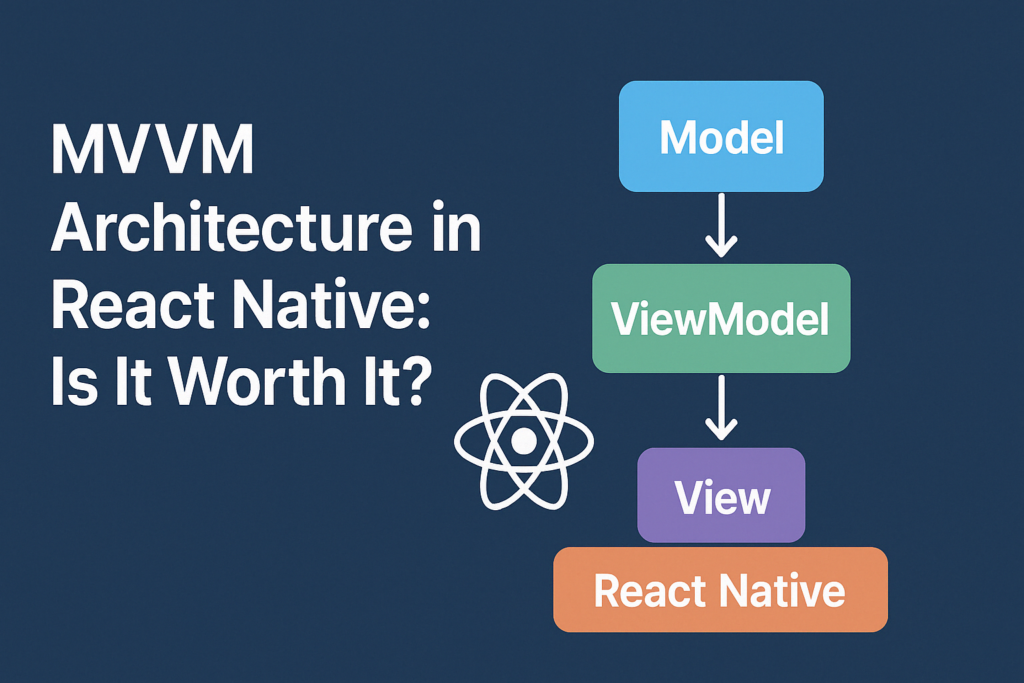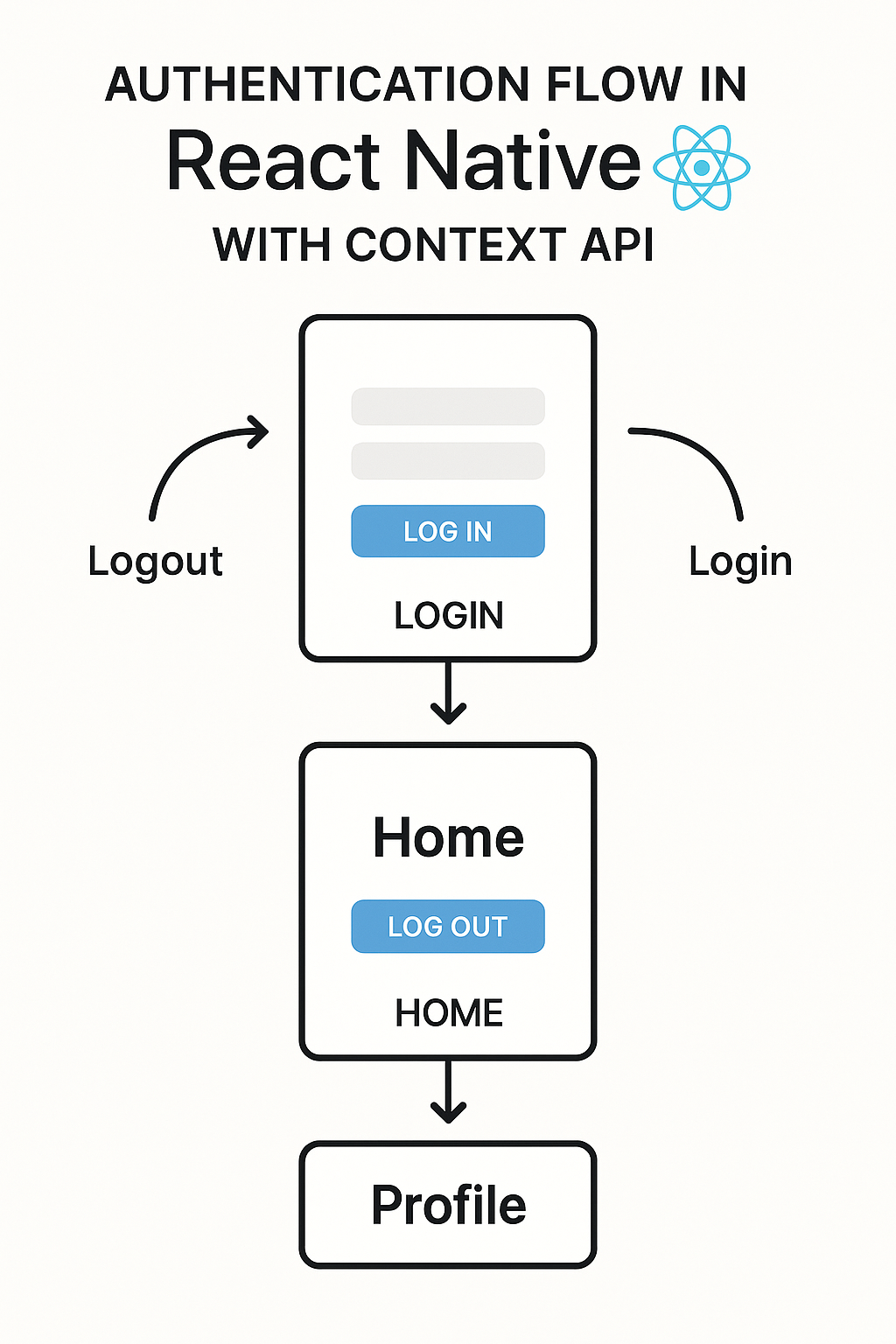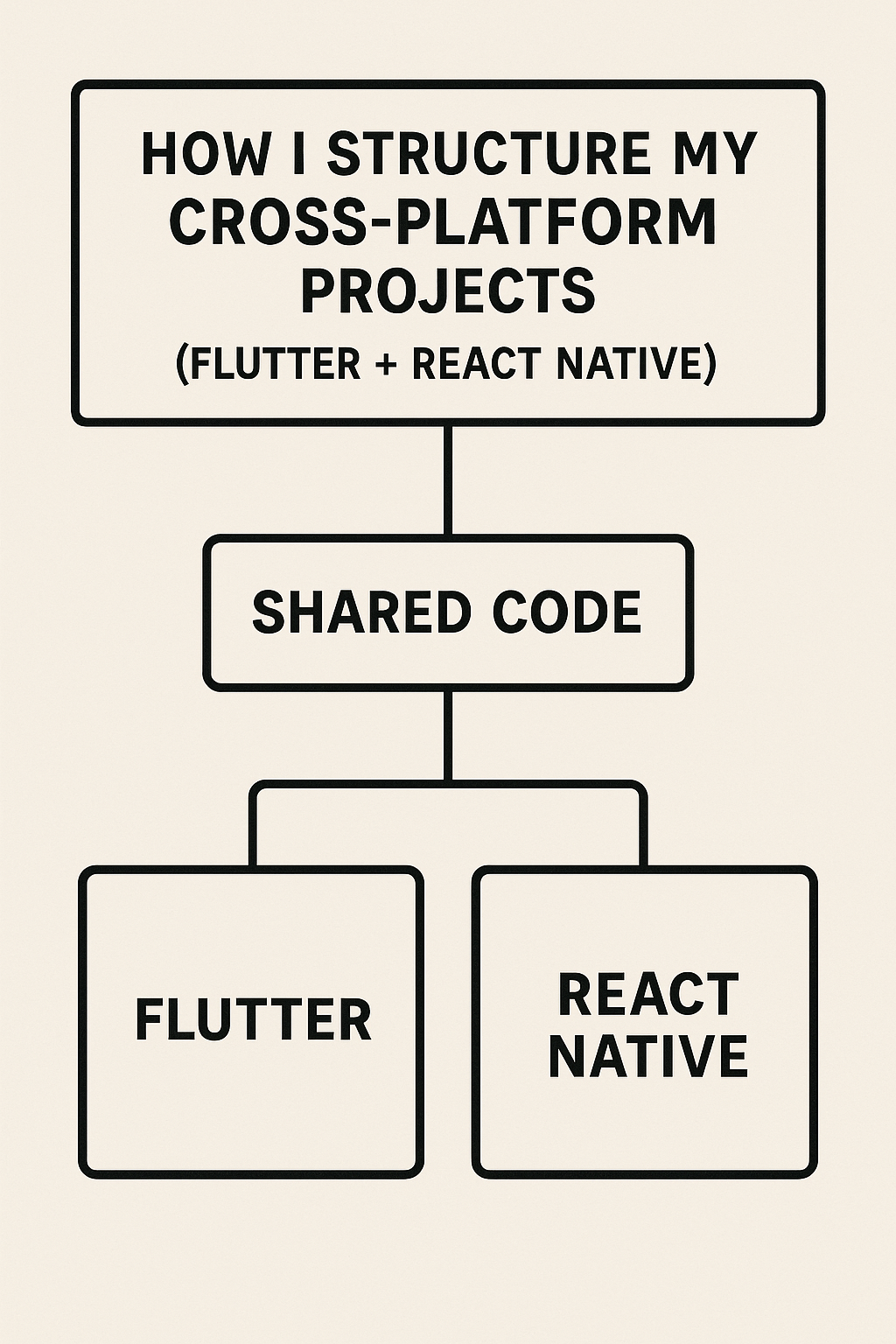
As React Native apps grow in complexity, maintaining clean and scalable architecture becomes essential. One popular architecture pattern borrowed from native development is MVVM (Model-View-ViewModel). But is it worth using in a JavaScript or TypeScript environment?
Let’s break it down — what MVVM means in React Native, how to structure it, and when the MVVM architecture makes sense to adopt it.
🔍 What Is MVVM?
MVVM stands for:
- Model – The data and business logic layer (e.g. API calls, data transformation)
- View – The UI (React Native components)
- ViewModel – Acts as a bridge between View and Model, managing state and exposing it to the View
In React Native, the ViewModel is often implemented using Hooks or classes, depending on your preference.
📦 Example Folder Structure (React Native + TypeScript)
src/
├── models/ # Data interfaces, DTOs
├── viewmodels/ # Custom hooks or classes that handle state
├── views/ # Screens & components
├── services/ # API, storage, utilities
├── navigation/ # Navigation config
├── App.tsx
🧠 Example: Login Screen with MVVM
🧩 1. Model (LoginPayload.ts)
export interface LoginPayload {
email: string;
password: string;
}
🧠 2. ViewModel (useLoginViewModel.ts)
import { useState } from 'react';
import { LoginPayload } from '../models/LoginPayload';
export function useLoginViewModel() {
const [form, setForm] = useState({ email: '', password: '' });
const [loading, setLoading] = useState(false);
const handleChange = (field: keyof LoginPayload, value: string) => {
setForm(prev => ({ ...prev, [field]: value }));
};
const login = async () => {
setLoading(true);
try {
// fake API call
await new Promise(res => setTimeout(res, 1000));
alert('Login Success');
} catch (err) {
alert('Login Failed');
} finally {
setLoading(false);
}
};
return { form, loading, handleChange, login };
}
📱 3. View (LoginScreen.tsx)
import React from 'react';
import { View, TextInput, Button, ActivityIndicator } from 'react-native';
import { useLoginViewModel } from '../viewmodels/useLoginViewModel';
export const LoginScreen = () => {
const { form, loading, handleChange, login } = useLoginViewModel();
return (
handleChange('email', text)}
/>
handleChange('password', text)}
/>
{loading ? (
) : (
✅ Pros of MVVM in React Native
- ✅ Separation of concerns: UI logic is isolated
- ✅ Easier to test and mock business logic
- ✅ Reusable view models across screens
- ✅ Cleaner code when managing complex state
❌ Cons of MVVM in React Native
- ❌ Overhead for small/simple apps
- ❌ Slight learning curve for new devs
- ❌ Can lead to unnecessary abstraction if overused
🧠 When Should You Use MVVM?
| Project Type | MVVM Worth It? |
|---|---|
| Simple apps | ❌ Not needed |
| Medium-sized apps | ✅ Helpful |
| Large-scale apps | ✅ Absolutely |
| Team projects | ✅ Consistency |
If you have business logic, stateful flows, or reusable logic across screens, MVVM architecture in React Native can bring real clarity to your project.
🏁 Conclusion
MVVM isn’t “required” in React Native, but it’s incredibly helpful once your app grows beyond a few screens. By introducing ViewModels via custom hooks or classes, you get better testability, clearer structure, and a cleaner separation of concerns.
If you’re already using context, Redux, or Zustand — MVVM can sit on top as an organizing principle rather than a replacement.
Try it in one screen and see how it improves your code clarity.


